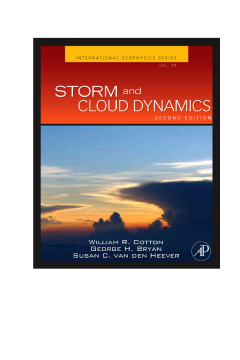
Additional Information
Book Details
Abstract
Storm and Cloud Dynamics focuses on the dynamics of clouds and of precipitating mesoscale meteorological systems. Clouds and precipitating mesoscale systems represent some of the most important and scientifically exciting weather systems in the world. These are the systems that produce torrential rains, severe winds including downburst and tornadoes, hail, thunder and lightning, and major snow storms. Forecasting such storms represents a major challenge since they are too small to be adequately resolved by conventional observing networks and numerical prediction models.
- Provides a complete treatment of clouds integrating the analysis of air motions with cloud structure, microphysics, and precipitation mechanics
- Describes and explains the basic types of clouds and cloud systems that occur in the atmosphere-fog, stratus, stratocumulus, altocumulus, altostratus, cirrus, thunderstorms, tornadoes, waterspouts, orographically induced clouds, mesoscale convection complexes, hurricanes, fronts, and extratropical cyclones
- Summarizes the fundamentals, both observational and theoretical, of atmospheric dynamics, thermodynamics, cloud microphysics, and radar meteorology, allowing each type of cloud to be examined in depth
- Integrates the latest field observations, numerical model simulations, and theory
- Supplies a theoretical treatment suitable for the advanced undergraduate or graduate level, as well as post-graduate
"On roughly 800 pages, the book presents a detailed account and mathematical description of all related phenomena and effects, illustrated by numerous black and white figures. It gives a very broad overview of the scientific work that has been done, presenting comprehensive lists of references at the end of each chapter (altogether 130 out of 809 pages!). Also the index is very detailed (34 pages) and helps making the book a valuable reference both for advanced students and experts. The quality of the print, the paper and the book as a whole is good throughout and it can thus be recommended without constraint." --Contemporary Physics, August 2011
